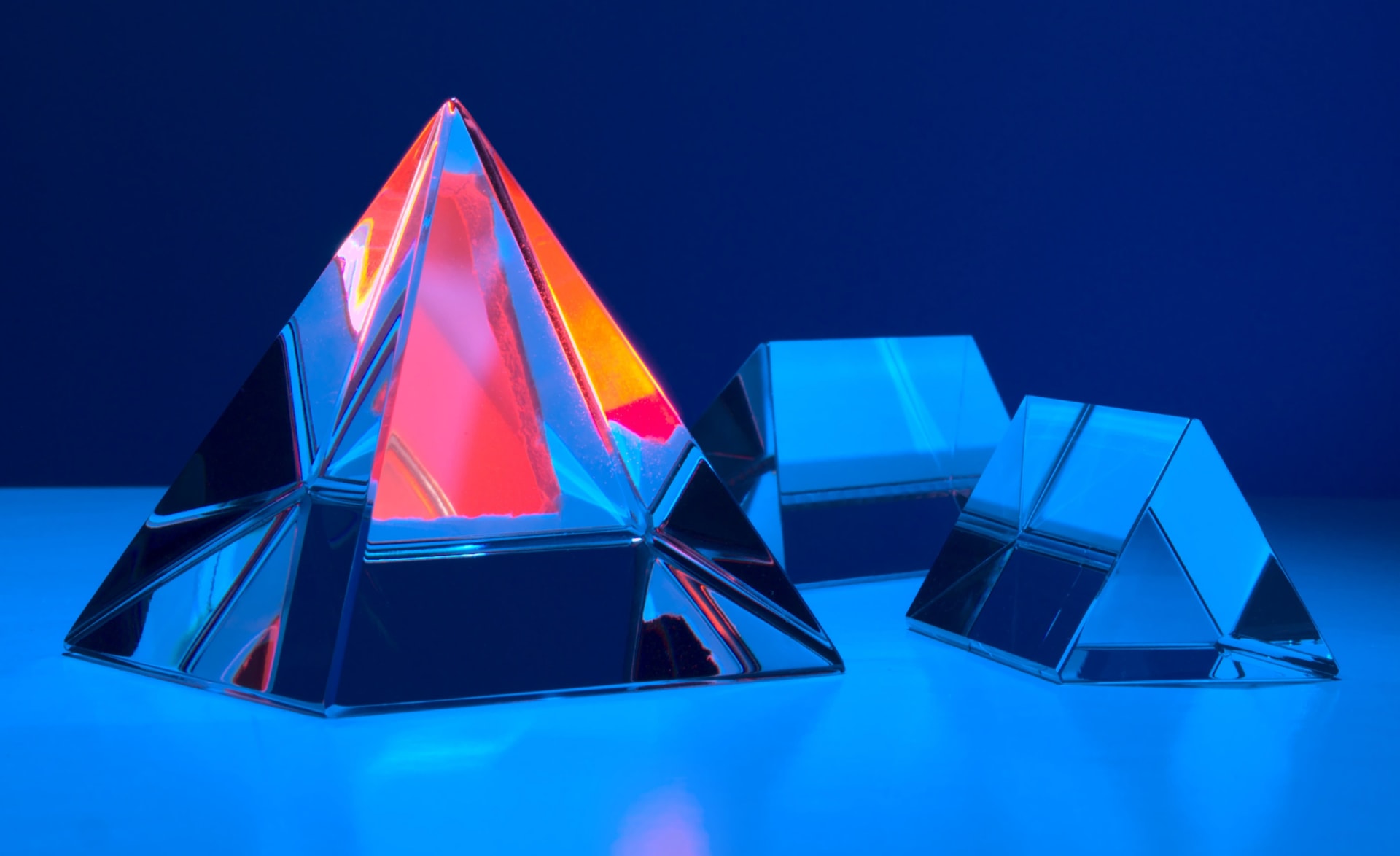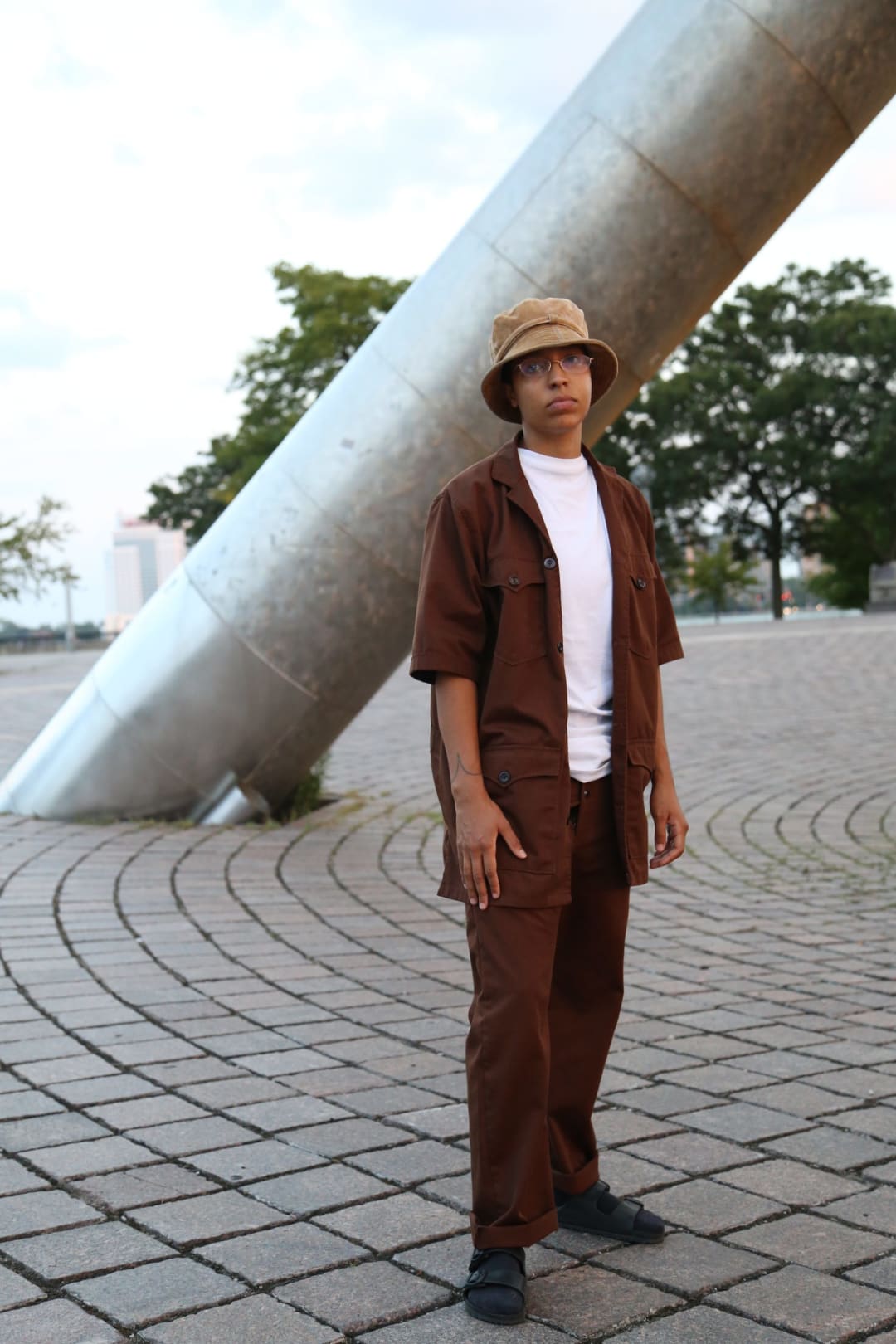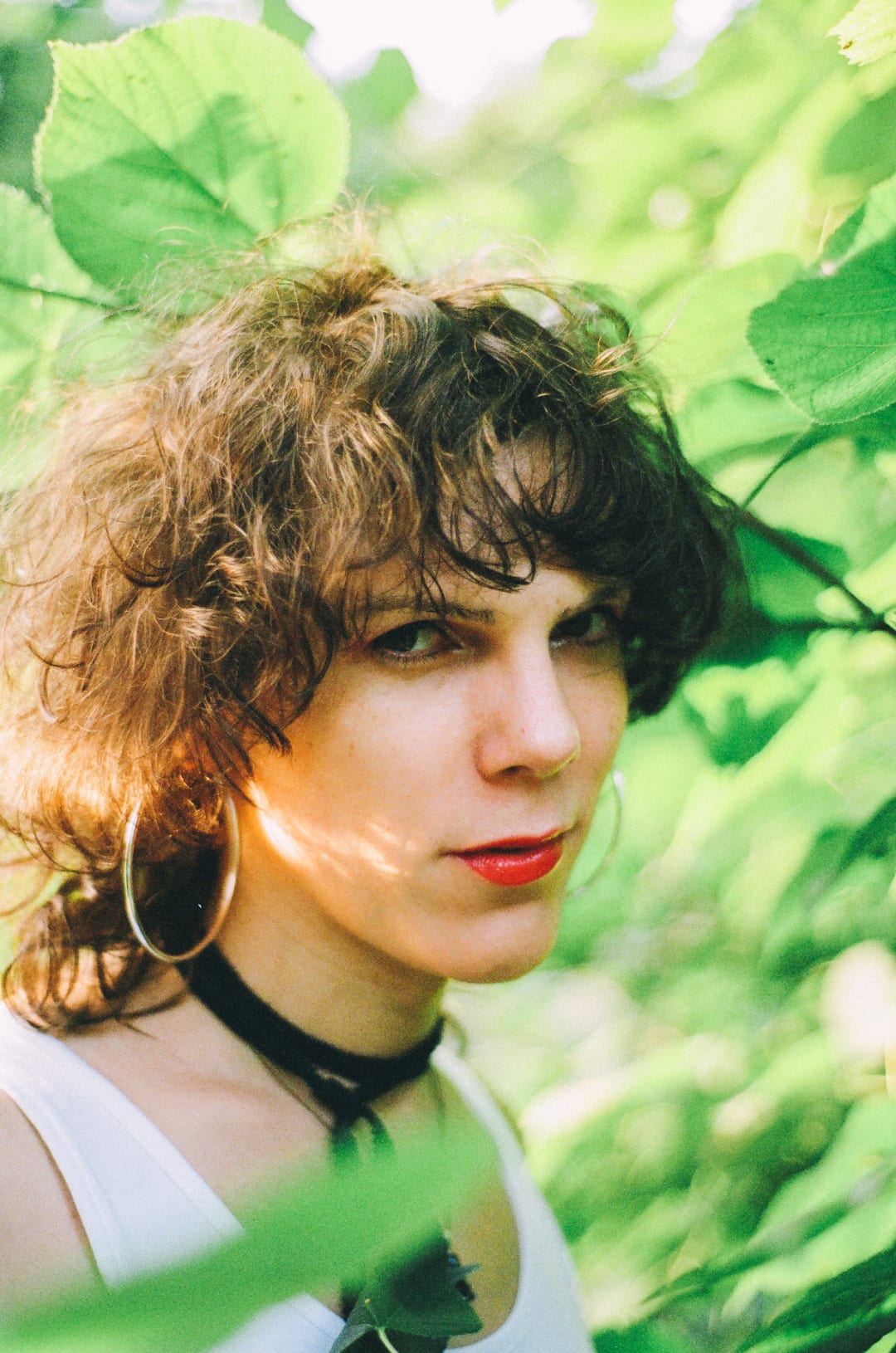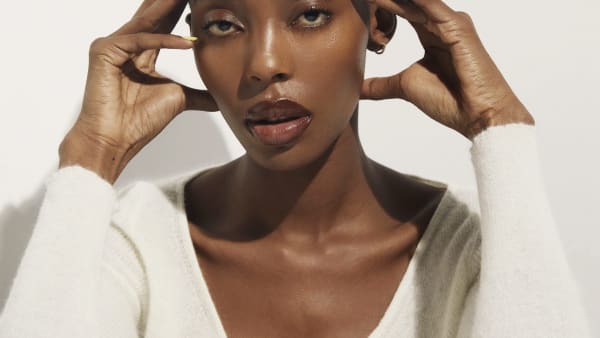

Sonic Healing: Exploring the Restorative and Spiritual Qualities of Music
Podcast host Chloé Lula interviews professor Iris Yob and musicians Laraaji, Dyani, and Eris Drew about their experiences on the therapeutic and transcendental sides of music.
I want to explore the role music has played in soundtracking the last year. For me, it’s helped sublimate feelings of distress and transform moments of sadness or extreme anxiety or boredom into sometimes transcendent ones of calm and groundedness and release. During the first lockdown, there were a couple of times when I took a walk in total desperation just to listen to something that transmuted that feeling into something more profound, a sensation of deep insight into the world beyond my body or even our composite lived experiences. I don’t think I’m alone in this either.
In the music media, there’s been a collective outpouring of affection for ambient music as an emollient as well as a yearning for dance music and the community and emotional deliverance it can provide. It’s been difficult for me to articulate or even understand the connection between art and the metaphysical, so I interviewed artists, DJs and musicologists to try to unravel the intractable relationship between music and spirituality, and how sound can facilitate personal and collective healing amid turmoil and uncertainty.
What happens when we have a spiritual experience listening to music? What is it about the tenor of the last year that has prompted so many people to turn to ambient and New Age? What exactly are we missing in the ecstatic communion of raves? What is it about music that allows us to tap into a higher plane of consciousness?
(These interviews have been edited for brevity and clarity.)
Chloé Lula: Iris Yob is a Professor Emerita at Walden University in Minneapolis, Minnesota, who specializes in music and spirituality studies. For years, she’s been trying to answer this very question of why and how music provides direction and purpose.
I think it’s important to establish what it is we mean when we talk about spirituality and how it departs from religion. I know you write they both share mystical and ritual elements, but that religion is yoked with an institution whereas spirituality is not, but maybe you can elaborate on that.
Iris Yob: I think we’ve tended, in the Western world at least, to scoop up the idea of spirituality and put it under the heading of religion. But I think, actually, the truth is that spirituality is the main heading and religion might be scooped up under it. In other words, I think religion is one manifestation of the human spirit or spirituality, but there are lots of other manifestations of a spirituality. I think somebody who enjoys sitting on a mountain top and watching a sunset might be having a spiritual moment that has nothing to do with religion. Or listening to a piece of music can be a spiritual experience without being a religious moment. So I look on spirituality as something greater than religion and the arts, although it assumes all those things and sometimes more than once. I mean, there must be a reason why religion has relied so much on music, and I think that’s because music expresses religion’s spirituality.
CL: Your paper Why is Music a Language of Spirituality caught my eye as I was doing research for this podcast. Can you lay out some of the conclusions you came to in this piece, and what it means to say that a piece of music has spiritual qualities?
IY: I think all music has the possibility of being spiritual. I think spirituality is connected with our life of emotion and our life of feeling. It has to do with how we experience things like awe and joy and fear and grief. What does music have to do with that? I think music, in its own way and in its own language, gives us some shape. It’s an audio shape, a shape we hear with our ears of what that particular feeling is like. When we listen to a mass, for instance, and we hear grief, the music is giving us shape to that grief, so we can look at it and feel it through and understand it and understand ourselves better.
The thing about spirituality is that it’s not material. It’s not something we can touch and hold and taste and feel. It’s even hard to talk about it because of that, but it’s something more than the material world we see around us. It’s something other, and we need a language to get to that other, and so that’s why I think these non-verbal languages like music help us get to it better than verbal languages do. To really put something like grief or joy into words always has a sense of feeling short. But sometimes, if you listen to a piece of music that expresses joy or grief, we can really have a sense of it. I think that’s how music is related to spirituality: It gives shape to the kind of emotions and meanings and feelings we have in our spiritual lives.
CL: What happens to us on a psychological or even a physiological level when we have some experience of music that floods us with positive emotions, oneness with our surroundings, and a stronger connection with the people around us?
IY: I think it can be transformative, and we see some of the effect of what happens when people are deprived of music. Like during the pandemic, for instance, people can’t go to concerts so much, so they have to rely on mediated music. I know some of my musician friends were in a state of grief about this. They’re just dying to hear some sound together with other people, and hear it live. I think when we’re deprived of that, we really feel it physiologically and psychologically.
When the US experienced the 9/11 tragedy of those planes going into those towers, music became a very important part of the grieving and healing process of the trauma of it—and particular pieces of music. It wasn’t happy little jigs and so on; it was very retrained, solemn music that was being played over and over. It was like a salve to the soul. It seemed to have some healing qualities for people, and lots of people have talked about this and explained how important it was for them to listen to that kind of music—because it helped them see their own grief and feel their own grief and understand it better.
I mean it doesn’t all have to be negative. Joy and delight, it could do the same for all of those feelings because, again, I think music gives us a shape, an audio shape to the emotions we have deep in our souls. [Music] allows us to explore it and to see it and to feel it and to understand it, understand a better level that’s not necessarily rational, but super-rational.
This element will show content from various video platforms.
If you load this Content, you accept cookies from external Media.
CL: As everyone has confronted the cosmic attrition of the global pandemic and its attending hardships, loss of income, isolation, absence of live music and performance, and other kinds of personal strife and difficulty, more historically left field philosophical, spiritual and mindfulness practices have become even more significant in the contemporary zeitgeist because they’ve become an important restorative sanctuary, like a way of massaging our brains and coping with the chaos and instability outside.
Edward Gordon, who’s been making music under the moniker Laraaji since the 1970s, has been drawing on the connections between soft focus music and spirituality for a long time—like way, way before this relatively recent trend. Creator of Day of Radiance, one of the original for ambient series LPs produced by Brian Eno, Laraaji is also renowned for his laughter meditation workshops. Brian Eno “discovered” him one day when he saw Laraaji improvising on an electronically modified zither in a New York park. He has since shot to prominence in the New Age music scene. I talked to him about spirituality from his studio in Harlem.
Laraaji: Spirituality is extremely important, necessary. It has allowed me to be relaxed, and the creative process has allowed me to accept whatever goes on in my life, so far as career-wise or as far as detachment from any particular outcome. Spirituality allows me to believe in and as a universal force, and it enters into how I prepare to perform and record. I relate within this understanding, and it has seemed to allow me to communicate very intimately in my music with audiences and followers because I’m relating within a unified field that involves everyone who’s listening or will ever listen.
Spirituality has allowed me—it’s like a vaster form of an internet—to intimately rapport through my music across national, gender, racial, even intergalactic barriers of being in a universal present time with my music.
CL: Can you remember when you first experienced or channeled the connection between your spiritual and musical practices and what that felt like?
Laraaji: The time that I started doing it more consciously, with passion, was just after a 1974 meditative sound hearing experience, where I was immersed in a baptism of cosmic sound or cosmic pulsation that shifted or advanced my understanding of the higher purpose and the higher power of sound in music—that sound can accompany the human emotions as it is involved in regular affairs of the daily life on the earth plane. And sound can also lift consciousness out of the personal, temporary life and reconnect it with the eternal stream of now, eternity. That experience in 1974 impressed me with the ability of sound to activate consciousness memory of itself being eternal and consciousness’s ability to embrace the unity of everything going on in the universe, right now in the unified field.
Each time I talk about it, I talk about it differently. First I call it just hearing the cosmic music. Other times I call it a sound initiation, a sound baptism, a sound vision. When I talk about it, I’m reminded that it is technically scientifically inappropriate to speak about it as though it happened in the past tense, because the teaching or the revelation in that experience is that there’s no past or future. There’s an internal continuous present moment.
And so after doing my research, not knowing what I was going to do with that experience, I was mystically guided to start working with an electronic zither autoharp. I was guided by a mystical voice while being in a pawn shop one day, and that autoharp allowed me to retune the instrument in such a way that I could use the instrument to communicate meditative states or tranquil contemplative states. At the time, I didn’t realize the connection, but it was allowing me to access that otherworldly hearing experience, which I cannot duplicate for a normal audience because that sound has no ending or beginning; it’s more of an etheric sound. But my memory of it and the emotional memory of it drives the kind of music I reach for, and the autoharp became the instrument that allowed me to be in rather deep meditative states while still performing consciously in a public place.
The music kept getting more and more committed to representing this otherworldly reality, this other field that permeates what we think is the third dimension. I use music, the spirituality of the eternal present moment, to communicate that for which words fall flat. Music allows people to come up to me after a performance and talk about their experiences, which pretty much parallels and compliments the experience I had in 1974. That feeling of the self that is beyond the body, feeling the nature of eternal time, and sensing that we are beyond our outer boundaries and forms, that we are an infinite field. We share this common oneness together.
CL: Can you talk a little bit more about the special role that improvisation has for you? I think you’ve called some of these compositions “celestial structures.” Maybe you could elaborate a little bit more on what that means.
Laraaji: To enter into an improvisation, there’s a meandering quality and a spontaneity quality of not knowing where you’re going but being open without the ego, the linear ego, or the linear mind, so that music can come through that’s not solely about my personal, ethnic, gender-based identity. But a music that excites the emotion of a sense that we’re in not just on earth, a geocentric entity, but we’re a galaxy. We’re a solar system, and we’re beyond.
Celestial means stars. To think celestially, to allow my expanded sense of the space beyond just the earth plane to impact and influence the music, the music unfolds in a way that I feel like I’m not just [playin] music in the unitarian church, the architectural geometrics of a church or of a town in Brooklyn or of the United States of America and or of just the earth, but a continuous sense of music interacting with and within an unlimited field, a unified field.
And so, to the sense that we are in this kind of cozy, unified field and allowing the music to represent this feeling, to allow the music to awaken our dormant memory that we are star children, celestial structures, the music unfolds more vertically than linearly. It’s not so concerned with an official beginning or official ending, but in a celestial structure. If you tune in to the music that I attempt to do, you can start it anywhere and end it anywhere. You just turn up the volume anywhere and turn it down anywhere. I’m not insulted, and the music isn’t harmed.
That celestial structure means that the whole of the universe is present at every instant, and that the music seems to acknowledge that the universe is not a linear construct, that it’s a vertical whole at every moment. So that celestial structure means that it’s not constructed with a beginning or an ending, but it’s whole at every moment.

CL: Music’s healing salutary energy has been critical for another artist I connected with, Dyani. They just released their debut album, Under, and started a sound healing residency in Detroit called Trust Your Rhythm, which is based on these experiences.
Dyani: There’s one thing: childhood trauma and experiencing my parents divorce when I was two years old. When I think about inner child work and what I went through there, I think I’m realizing I internalized a lot of the sense of abandonment. Or internalizing guilt around their divorce and thinking, “Oh it’s my fault, must be my fault.” That’s something that you carry subconsciously. But then in college I experienced sexual assaults, and that happened in my freshman year. I think that was definitely like a pivotal moment where…the first thing is I internalized that again, where it was that same feeling of like, “Okay, this is my fault.” Society teaches you that as well, especially being seen as a woman and especially being young.
There’s a lot of these moments where I feel like my voice had been taken from me, and so this whole journey of discovering music and sound, it was always there. But then it became this whole other way for me to heal, essentially, and to really find my voice, and to understand the ways that trauma manifests in the body when it’s internalized, and how sound is such a powerful tool to help you transmute that and shift your perspective on what you’ve been through. I think music has had such a special place in my heart for that reason, for the ways that I’ve been able to connect, one with just my experiences and healing in this lifetime, but then it became a whole other realm and avenue to tap into what my ancestors went through. After listening to songs that I’ve made, I’m like, “Whoa, I created this, but I also feel like my ancestors and spirit are speaking through me through this medium.” I can actually just go back and learn by listening back.
I started to use music as the safe haven for myself and my body, and a way for me to just feel safe. I think that was what it became for me. In general, I think about the voice a lot as this portal into understanding your soul and understanding both the uniqueness of your soul, but then also the multiplicity within it—my voice being my voice, but then it also being the voice that is able to channel voices that came before me and messages that I need in order to heal and to have a relationship with those spirits and ancestors that are guiding me and trying to teach me something. My father was born in Port-au-Prince in Haiti and my mom was born in Zimbabwe, so my dad is Black and my mom is white.
CL: If you had to articulate what it felt like for you to tap into this emotion when you’re practicing music, you’re singing or you’re composing, I mean what does that feel like for you? What is the moment of catharsis like?
Dyani: I think it manifests in different ways. It really feels like it starts with an emotion, so I think a lot of it that was coming up was grief and shame and guilt. They’re heavy emotions, they feel heavy in my body and stagnant almost. Then when I’m able to translate or transmute that into singing, it’s like the sound of my voice allows me to actually process and feel the emotions that I maybe was too afraid to feel before.
I think that’s catharsis; that’s exactly what it feels like. It’s like, okay, I can actually experience a lot of these emotions I didn’t even know were there. I didn’t even know that to the depths of emotion that I could experience, and I think that’s what’s so powerful with the music: It helped me to actually have deep, deep cries. It allows me to scream. It allows me to not have shame around emotion in general. I think it’s almost like the music creates the safe space for me to have that catharsis.
CL: You run a residency in Detroit called Trust Your Rhythm, which is dedicated to “sounds for body attunement, sonic healing, and justice learning.” It caters but isn’t limited to predominantly Black, queer, non-binary and trans folks. Can you talk a little bit more about the program and what made you decide to start it up?
I think I wanted to just be able to further my healing practice, whether it was doing reiki or sound healing. Then create community around that, because I think that’s what I was searching for, especially at the beginning of the pandemic. Like, who are other people that are interested in sound healing? But particularly, it’s power. It’s political power, or it’s power to point to the ways that we don’t have access to healing, point to the way that Black queer, Black trans people specifically need this more as marginalized folks.
What I’m offering in that space is, I’m essentially using a drum to open the session and close the session with different rhythms that are both coming intuitively but also based on different music that I’m listening to—specifically location rhythms, and trying to understand how rhythm specifically helps us tap into our inner knowing and wisdom.
CL: From the outside, it seems like so much of your music making is really about community building, rather than just solitary spiritual change, although it’s obviously about that too.
Diani: It’s like, as above so below. As deep as I can go emotionally, there’s also so much joy and so much connection and just feeling seen. Yeah, just feeling seen and knowing that even if I’m completely isolated, I’m never actually alone. I think the source of a lot anxiety or depression in the world we live in is just by a lot of us feeling like we’re alone. That we don’t have anyone, that we’re going to die alone. I think this practice has helped me to realize that I’m actually never alone. That is just an illusion.

CL: There’s something about the communal aspect of experiencing music that can be even more transformative than engaging in solo music-making experiences. If there’s one person who knows about the spiritual power of raving, it’s Eris Drew. I really wanted to talk to her about her idea of the Motherbeat, this divine feminine energy that she first experienced at a party as a teenager, and that’s been a guiding force in her life ever since. I interviewed her about an essay she wrote a couple years ago entitled “More Than a Party,” in which she outlines the necessary ego-shuttering ordeal and ritual that communal music listening can provide.
Eris Drew: When I’m dancing for more than, even a very short period of time, to music that has that intensity, I’ve trained myself I think through years of raving and through some of the techniques that ravers use to have altered experiences. I’d be happy to go through those techniques. I’ve had a set of very powerful experiences, and when you’re dancing like that, you do enter kind of trance. I mean it’s no coincidence that we have something called trance music in rave. It’s really all trance music, though, so that’s just a little genre for media. It’s all a form of trance music.
I think Octo Octa’s and my sets show that because we play really fun music, but at the center of it is a trance wave. It is a heartbeat that doesn’t stop for hours, so I think it’s important to stop and point out that, whatever insights I have, whatever science exists in relation to this, we can only talk about this because indigenous people have continued preserving these kinds of trance practices. Really, a lot of the texts that I cited in that article were written by white anthropologists, so I don’t think the western mind would come to this conclusion without this knowledge. We owe such a debt of gratitude—I can’t even really express it in words—to all indigenous people. These are ubiquitous kinds of things you see in indigenous cultures. It’s not unusual for drumming and percussion to be very central to ecstatic practices all over the world and at different times and places. It’s not true of everyone, of course, but you can find the drum at the center of a lot of spiritual practices. Rave seems to be a really interesting modern delivery system of that very old technology.
CL: You mentioned that there were techniques that you could explain a little bit more. Do you mind?
ED: No, not at all. I think that if you were to ask someone why rave is spiritual, I think the first things that would come to mind would be, it’s a positive collective experience. The music is powerful. You get hot, you get sweaty, it goes all night. Well, what does all that mean? Well, a number of spiritual practices involve what you call ordeals and rave is an ordeal at least for people who are pretty hardcore about it. There’s disruption of sleep cycles. There’s staying up late. There’s fasting as part of it. You might say, “Well, what do you mean? I don’t know ravers who fast.” Well, a three-day party is quite a trick to the system. Part of raving is subjecting your body to an ordeal and breaking yourself down a little bit, because when you’re broken down, that’s when your ego starts to get quieter, and that’s when other parts of your subjective experience can start to unfold.
Some of the other techniques that are there of course the drums, so you’ve got the music itself and the drum isn’t it. If you listen to a lot of rave music, you’re going to hear very interesting resonances. There’s a lot of songs in techno and other forms of contemporary electronic dance music where there are no melodies. All you’re really listening to is a timbre change to a specific pattern. You’re focusing on that pattern, you’re listening to it over and over again, and that pattern may contain certain resonances and frequencies that really strongly evoke a lot of drone music.
I think drones are really part of the contemporary dance music architecture too, and so I think based on what we know about music practices involving drones, these are spiritual music practices. This is for deep focus and deep listening. It’s meant to create a different experience in a listener. The music seems pretty well primed to give these people these kind of experiences.
This element will show content from various video platforms.
If you load this Content, you accept cookies from external Media.
CL: I could be wrong, but it seems like a lot of the healing aspects of music for you come from its physicality. Both in the way the base hits you with the rave, to the experience of being physically punished by long weeks of partying, to being actually surrounded by other people. I wonder how that kind of spiritual experience would translate off the dance floor. I mean, listening to this kind of music at home but also listening to ambient music that maybe doesn’t impart the same kind of visceral effect.
ED: Well, that’s interesting. One on the point of ambient music, if you look at someone like Pauline Oliveros, she’s going to be talking about breathing and stuff with the respect to that. So it’s still pretty intense physiological experience, because what you’re doing is you’re making yourself be still—and that’s not something we do very much in this world.
If you’re listening to a 50-minute ambient piece, you’re doing something that most human beings around you aren’t doing, which is listening to durational music. It’s an ordeal in itself. Try to sit still for an hour. So I do think there’s a physical component, but to the point, the ecstatic experience does relate to changes in the body. And so the opposite of that sitting still is the magical heat of a party. It’s really interesting when I was reading about, in various anthropological texts, how much magical heat is a part of various spiritual traditions. It never even really occurred to me and it’s kind of funny.
If you’ve seen me DJ, I am a sweaty disaster after about the first ten minutes. It always triggers my dysphoria, it always is kind of not pleasant in its own way, but it breaks me down. It’s like I have to just let go in those moments, and the heat puts me in the trance in this way. I am sometimes hallucinating five minutes into a DJset and I’ve not taken any substances. I do sometimes, but the vast majority of times I’m playing I’ve just gotten off a plane an hour before. That ability for me to build heat in my body quickly is skill I’ve developed, even though to me it’s a frustrating thing, as someone who’s got lights on them. When I’m home, though, when I’m really mixing intensely, not just listening to music, the exact same thing happens. It could be cold in our house, and it’s here, and I’m not even dancing. It is a really intense physiological experience.
I think COVID has really shown me how much raving is really good for me because it’s boundary dissolving. It’s a pretty intense physiological experience to just be packed into a room with a ton of people dancing and moving. One thing I do want to say though, from an ableist perspective, is I don’t want to emphasize too much the need to dance. I know so many ravers who like to just stand in front of a speaker and seriously listen hard and just have an intense experience, but they’re having the ordeal. They’re having the deep listening experience.
Chloe Lula: I think the appeal of ambient music and the parallel appeal of dance music is that it is durational like you said. I think that when you’re listening to something really deeply and just letting go, “surrendering to the music,” it’s really surrendering to the experience of just being in this flow state.
ED: Yeah. I mean I really think of my DJing in those terms. Like I’ll say to Octa, “I didn’t get to the flow,” which means that I was being very much the technician, and sometimes that’s because I couldn’t. The monitoring wasn’t great, or maybe someone was mean to me right before the set, or maybe I’m, stuck in psyche for some reason. These things happen.
I don’t always get there, but that’s always my goal because that’s the kind of state you’re in. When, as an artist, you’re really letting the irrational and the subjective just come out of you. You’re responding rather than directing, so that’s a really powerful experience in this world, as it exists. I liked how you said it as a kind of surrender, because I think that’s true. I think a lot of people couldn’t even give up that level of control.
Published March 04, 2021. Words by Chloé Lula.












Follow @electronicbeats